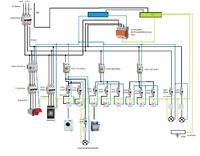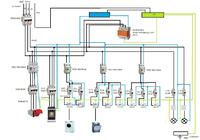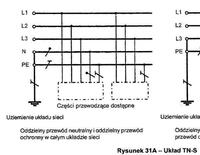I am an investor. The installation will be done by a familiar electrician. There is not much experience in these matters, so I asked for advice here on the forum.
Finally, the installation will be checked by a licensed electrician with measurements.
It was, of course, about 16kW (Czech error).
Connection conditions:
YAKY 4X70mm ^ 2 cable connection from the nearest pillar of the LV-0.4kV overhead line to a built-in connector, integrated with the ZK1x-1P metering and billing system.
Main protection 3x40A, pre-meter protection 3x25A (ZKP).
Installation separation point from tnc to tns in the receiving installation. This point must be earthed.
Conductor cross-sections
- for switchgear 4x10mm ^ 2
- 3x2.5mm ^ 2 socket cables
- lighting cables 3x1.5mm ^ 2
- connections in the switchgear cable 4mm ^ 2
- ground wire from the PE bus to GSW 1x10mm ^ 2
In the drawing, I drew the power supply of the bathroom lighting circuit with off. residual current P302 40A 30mA. Or maybe it would be better to use an additional difference only for this lighting?
So in my case, use a 3-pole surge protector? I was suggested by other switchgears discussed in the forum, the electrician also offered me such a solution.
Phase presence controls are not required, but I will consider installing them.
All installations will be made of plastic pipes, the shower tray and bathtub will be made of acrylic.
I wrote the cables connecting the modular apparatus that they will be 4mm ^ 2. I suggested a few topics about switchgears. Use other?
The 5x2.5mm ^ 2 wire will be too weak to connect an electric cooker? Apply thicker?
There will be 7 meters from the GSW bus to the PE bus in the switchgear. The arrester is connected to the tns network separated from the tnc (according to the connection conditions).
In case the protector burns out, I will fly to the connector. In this case, you will know that something has happened. If we use a fuse protection, in the event of a fuse burnout, we will be deprived of protection, and we will not look into the switchgear because the installation is working.







